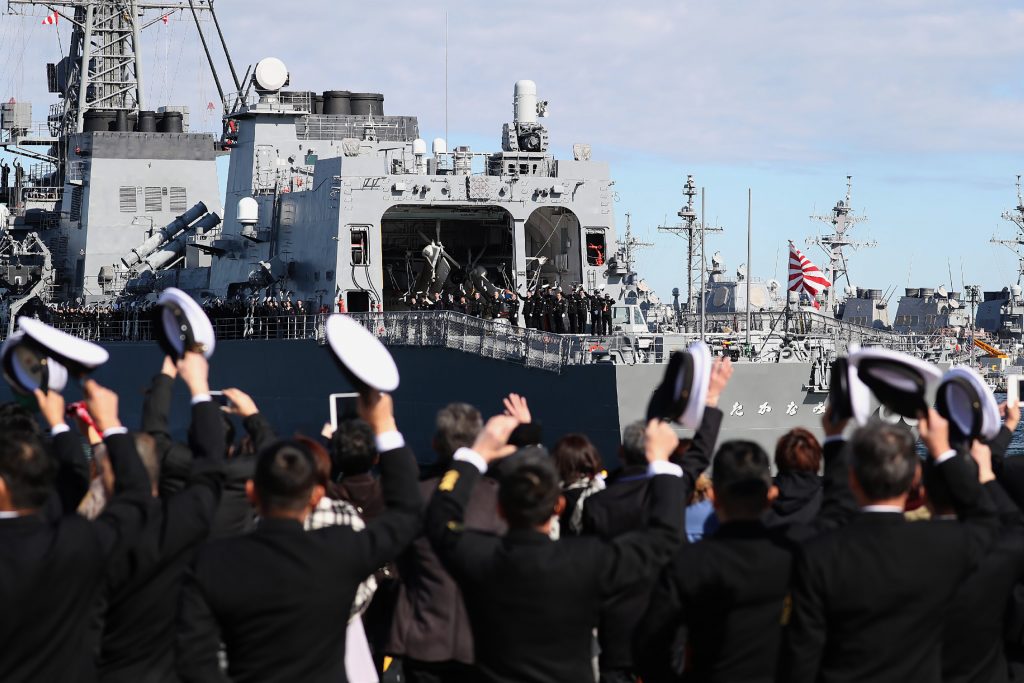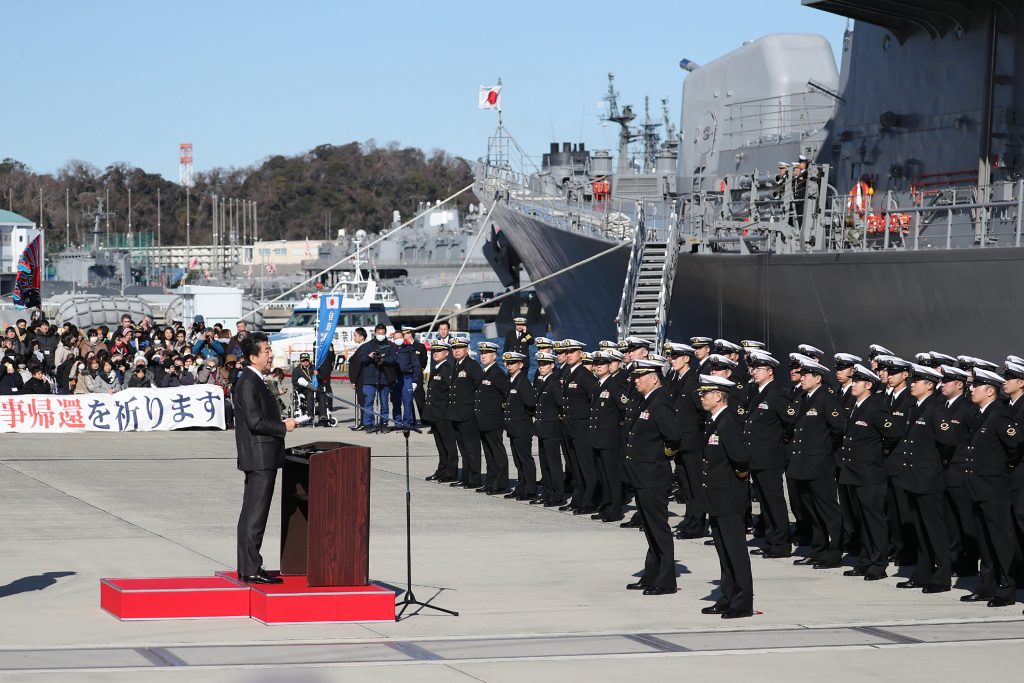



A Japanese destroyer left its base in Kanagawa Prefecture, south of Tokyo, Sunday for the Middle East on an information-gathering mission aimed at ensuring the safe navigation of ships related to Japan in the region.
The Maritime Self-Defense Force's 4,650-ton Takanami is scheduled to arrive in the region in about three weeks to operate in areas, including the Gulf of Oman and the northern Arabian Sea.
With 208 MSDF personnel and two helicopters, the Takanami departed the Yokosuka base at around 10:40 a.m. (1:40 a.m. GMT). It comes with bulletproof glass windows and is armed with machine guns. They will be replaced by another MSDF unit after about four months of operations.
The mission focuses on research and studies permitted under the Defense Ministry establishment law. But the destroyer will take defensive action under an order from the defense minister if it is attacked or in response to contingencies.
"We're well prepared. We'll do information-gathering activities in a responsible way," said the 48-year-old commander of the mission, Capt. Yosuke Inaba. A send-off ceremony was attended by about 500 family members and others.
Speaking to the crew before the departure, Prime Minister Shinzo Abe said, "Your mission is of a great significance that is directly linked to people's lives." Safe navigation in the Middle East is crucial for Japan's energy security as the country relies on the region for nearly 90 pct of its crude oil supply.
Japan's cabinet approved the one-year information-gathering mission late last year. The mission is scheduled to last until Dec. 26 this year and can be extended with cabinet approval.
As part of the mission, an MSDF air surveillance unit of about 60 personnel has been operating in the Gulf of Aden since last month using P-3C patrol aircraft.
Japan made the decision to send MSDF troops to the Middle East after prodding from the United States, its key ally. But Tokyo did not join a U.S.-led naval coalition in the region out of concern that doing so will hurt its friendly relations with Iran.
The Japanese government has not given any hint on the duration of the information-gathering mission. "The United States wants Japanese troops to stay there as long as possible," a government official said.
AFP